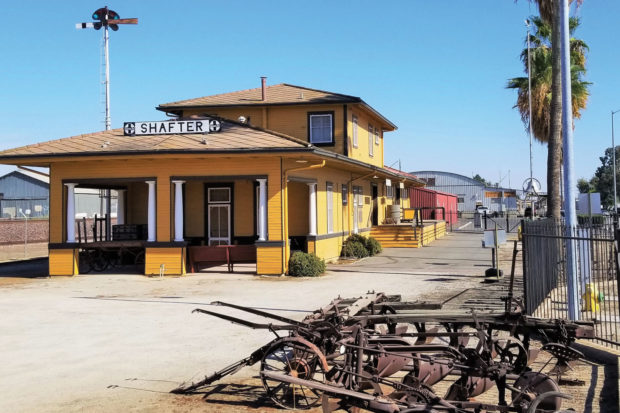
By Tom Frantz
When community residents and local businesses meet to discuss solutions to their air pollution needs, innovative ideas are sometimes the result. Ten communities in California have been meeting for the past 10 months to propose how they would each spend approximately $40 million to improve the quality of the air they breathe in their respective neighborhoods.
The program is part of a state legislative mandate called AB 617 and uses Greenhouse Gas Reduction Funding. The resulting Community Emission Reduction Plans (CERPs) are interesting to compare.
Every community has its own distinct needs. Here is a description of five of 10 recently proposed CERPs including South Fresno and Shafter in the San Joaquin Valley.
Understand first that these meetings are being directed by local air districts. Their influence in determining these plans is unfortunate. They began the process last fall by telling everyone what a great job they are doing and then dared the residents to come up with better ideas.
San Bernardino, with the worst air in Southern California, decided that ongoing programs were probably the best. Their proposals seem to say that getting more money locally into these ongoing programs will be sufficient. Their plan includes increased monetary incentives for cleaner trucks on local roads, electric buses for mass transit, air filtration at schools and zero emission infrastructure where electricity can replace combustion engines. Nothing new.
West Oakland, with pollution from ports, traffic and industry in close proximity to low-income neighborhoods, has proposed lots of policy and infrastructure changes that will move some of this pollution elsewhere. They want different truck routes, for example. They also have proposed vegetative barriers protecting neighborhoods, plus reduced idling of trucks, buses, ships and locomotives.
Moreover, they want electric vehicle chargers, electric bicycles, phasing out of natural gas for heating buildings, better street sweeping, electric yard trucks and locomotives, and air filtration for schools. It seems the $40 million will be spread pretty thin but with plenty of good ideas.
Calexico and El Centro, on the Mexican border in the Imperial Valley, made pretty standard requests appropriate for their neighborhoods. They want cleaner wood stoves, alternative truck routes and reductions in truck idling. They also emphasized urban greening, such as tree planting and vegetative barriers, along with parking lot paving. For schools, they want air filtration and electric school buses.
South Fresno residents are surrounded by heavy industry and rail yards. They want extra money for cleaner diesel trucks including some using natural gas. They want at least one natural gas fueling station. They also asked for five cleaner diesel locomotives and/or rail yard locomotives, which cost millions of dollars.
Twenty-five electric yard trucks are proposed for the many factories and distribution centers in the area. A large sum of a million dollars is recommended for vegetative barriers protecting residents from local pollution. One and a half million dollars is proposed for filtering the air at all local schools.
Switching out old polluting cars for cleaner cars will be stepped up as well. Finally, they want the air district and the California Air Resources Board to intensively study all local industry to see where boilers and engines can be made cleaner.
Shafter, where I am a committee member, will try to build up a large fleet of resident-owned electric vehicles with $6 million in incentives. There will be several dozen installations of electric vehicle charging stations as well.
A fleet of electric vehicles will also be available for rent at subsidized rates. Rounding out this electrification transition will be electric school buses, electric public fleet vehicles, electric dial-a-ride vehicles, free electric lawn mowers, electric yard trucks, money for converting heating devices in homes to electric heat pumps and money for solar panels on homes.
Also, air filters for schools will be provided. There will be extra money for farmers to purchase cleaner tractors, low-dust almond harvesters and cleaner harvest trucks, and to use alternatives to open field burning.
Money for planting trees was included but was greatly limited by the air district despite committee pleas. There will be money for more sidewalks and bike lanes.
Finally, some money is being allocated to set up a pesticide notification system. This will let residents know when and where the most toxic pesticides are being used so they can take appropriate actions to protect themselves and their children.
The next two Valley communities for this program are being chosen at this time. It appears that Stockton and the Lamont-Arvin area will be at the top of the list. I predict Stockton will pretty much go along with extra money for ongoing programs. The Lamont-Arvin area, with the worst air in the Valley, and a lot of environmental activists, will be more interesting to watch.
*****
Longtime clean air advocate Tom Frantz is a retired math teacher and Kern County almond farmer. A founding member of the Central Valley Air Quality Coalition (CVAQ), he serves on its steering committee and as president of the Association of Irritated Residents. The CVAQ is a partnership of more than 70 community, medical, public health and environmental justice organizations representing thousands of residents in the San Joaquin Valley unified in their commitment to improving the health of Californians. For more information, visit www.calcleanair.org.
